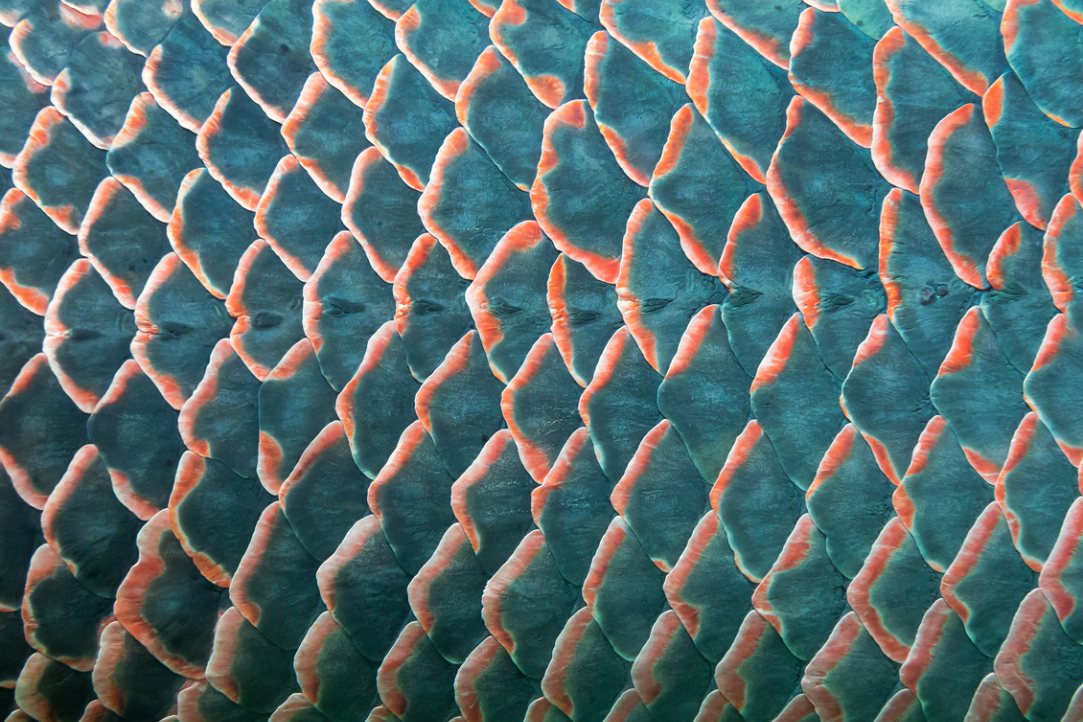Physicists from Russia and Brazil Unveil Mystery behind Complex Superconductor Patterns

The mechanism is described by the Ginzburg–Landau equation at the Bogomolny point
Scientists at HSE MIEM and MIPT have demonstrated that highly complex spatial structures, similar to the intricate patterns found in nature, can emerge in superconductors. Mathematically, these patterns are described using the Ginzburg–Landau equation at a specific combination of parameters known as the Bogomolny point. The paper has been published in the Journal of Physics: Condensed Matter.
One of the most intriguing and not fully understood questions in science is how seemingly simple natural laws give rise to complex patterns, such as zebra stripes or fish scales.
Scientists have long been trying to understand how such patterns emerge in nature. The first explanation was offered in 1952 by mathematician Alan Turing, one of the founders of computer science. According to Turing, complex patterns arise from the competition between simple interactions within a system. Thus, in chemical reactions, patterns are formed through two main mechanisms: diffusion (the distribution of substances) and autocatalysis (where the reaction accelerates itself). It soon became clear that while the Turing model can also describe the emergence of complex patterns in biology effectively, it does not account for all natural phenomena.
Scientists at HSE and MIPT, in collaboration with physicists at Universidade Federal de Pernambuco, Brazil, found that the formation of complex patterns in nature can also be explained using the Ginzburg–Landau equation that describes how the state of a superconductor changes in response to a magnetic field.
A superconductor is a material that conducts electric current without resistance, meaning there is no loss of electricity. Under the influence of a magnetic field, superconductors can exhibit different behaviours: they can either completely expel the magnetic field or allow it to penetrate their mass, forming spatial structures such as a lattice of vortices.
However, according to the theory of superconductivity, there exists a special combination of superconductor parameters—referred to as the Bogomolny point—where any structure can emerge. In this study, the scientists investigated how a magnetic field changes in response to external conditions near the Bogomolny point.

Co-author of the paper, Professor, MIEM HSE
An infinite variety of intricate configurations, like monsters, lie dormant at the Bogomolny point, waiting to be unleashed as you move away from it. Depending on how you move away from it, certain types of configurations emerge. There are various methods to move away: altering the temperature, adjusting the sample size, initiating an electric current, or stacking two superconductors atop each other. This will produce a vast array of exotic patterns.
For example, structures emerge in superconductors where regions devoid of a magnetic field coexist with regions where the magnetic field forms lattices of vortices. A superconducting film can give rise to extremely exotic patterns resembling the distribution of cases in the COVID-19 pandemic.
Co-author of the paper, Professor, MIEM HSE
Previously, superconductivity was not considered a phenomenon where complex patterns could occur, as a superconductor is a relatively simple physical system. However, it turns out that highly complex magnetic structures can indeed manifest in superconductors. Our research contributes to the current understanding of how complex patterns emerge in seemingly simple systems.
The scientists suggest that the effects observed in superconductors could be used in the development of measuring instruments. For instance, by monitoring changes in configurations within a superconductor, one can gauge the extent of temperature, current, or geometric alterations in the sample.
Vasily Stolyarov
Co-author of the paper, Director, Centre for Advanced Mesoscience and Nanotechnology, MIPT
Research in this field has been ongoing from both theoretical and experimental perspectives, as well as from a technological standpoint. Since 2018, we have been the pioneers in conducting and publishing a series of experimental studies that led to the discovery and description of the process of pattern formation on the mesoscopic scale in ferromagnetic superconductors. Now, we are actively searching for and devising new systems where superconducting patterns can be controlled, thus enabling their application in nanotechnology and nanodevices.
See also:
Script Differences Hinder Language Switching in Bilinguals
Researchers at the HSE Centre for Language and Brain used eye-tracking to examine how bilinguals switch between languages in response to context shifts. Script differences were found to slow down this process. When letters appear unfamiliar—such as the Latin alphabet in a Russian-language text—the brain does not immediately switch to the other language, even when the person is aware they are in a bilingual setting. The article has been published in Bilingualism: Language and Cognition.
HSE Experts Highlight Factors Influencing EV Market Growth
According to estimates from HSE University, Moscow leads in the number of charging stations for electric vehicles in Russia, while Nizhny Novgorod ranks first in terms of charging station coverage, with 11.23 electric vehicles per charging station, compared to 14.41 in Moscow. The lack of charging infrastructure is one of the key factors limiting the growth of the electric vehicle market. This is stated in the study titled ‘Socio-Economic Aspects of Introducing Electric Vehicles in Commercial Transportation’ conducted by experts from the Institute of Transport Economics and Transport Policy Studies at HSE University.
Machine Learning Links Two New Genes to Ischemic Stroke
A team of scientists from HSE University and the Kurchatov Institute used machine learning methods to investigate genetic predisposition to stroke. Their analysis of the genomes of over 5,000 people identified 131 genes linked to the risk of ischemic stroke. For two of these genes, the association was found for the first time. The paper has been published in PeerJ Computer Science.
First Digital Adult Reading Test Available on RuStore
HSE University's Centre for Language and Brain has developed the first standardised tool for assessing Russian reading skills in adults—the LexiMetr-A test. The test is now available digitally on the RuStore platform. This application allows for a quick and effective diagnosis of reading disorders, including dyslexia, in people aged 18 and older.
Low-Carbon Exports Reduce CO2 Emissions
Researchers at the HSE Faculty of Economic Sciences and the Federal Research Centre of Coal and Coal Chemistry have found that exporting low-carbon goods contributes to a better environment in Russian regions and helps them reduce greenhouse gas emissions. The study results have been published in R-Economy.
Russian Scientists Assess Dangers of Internal Waves During Underwater Volcanic Eruptions
Mathematicians at HSE University in Nizhny Novgorod and the A.V. Gaponov-Grekhov Institute of Applied Physics of the Russian Academy of Sciences studied internal waves generated in the ocean after the explosive eruption of an underwater volcano. The researchers calculated how the waves vary depending on ocean depth and the radius of the explosion source. It turns out that the strongest wave in the first group does not arrive immediately, but after a significant delay. This data can help predict the consequences of eruptions and enable advance preparation for potential threats. The article has been published in Natural Hazards. The research was carried out with support from the Russian Science Foundation (link in Russian).
Centre for Language and Brain Begins Cooperation with Academy of Sciences of Sakha Republic
HSE University's Centre for Language and Brain and the Academy of Sciences of the Republic of Sakha (Yakutia) have signed a partnership agreement, opening up new opportunities for research on the region's understudied languages and bilingualism. Thanks to modern methods, such as eye tracking and neuroimaging, scientists will be able to answer questions about how bilingualism works at the brain level.
How the Brain Responds to Prices: Scientists Discover Neural Marker for Price Perception
Russian scientists have discovered how the brain makes purchasing decisions. Using electroencephalography (EEG) and magnetoencephalography (MEG), researchers found that the brain responds almost instantly when a product's price deviates from expectations. This response engages brain regions involved in evaluating rewards and learning from past decisions. Thus, perceiving a product's value is not merely a conscious choice but also a function of automatic cognitive mechanisms. The results have been published in Frontiers in Human Neuroscience.
AI Predicts Behaviour of Quantum Systems
Scientists from HSE University, in collaboration with researchers from the University of Southern California, have developed an algorithm that rapidly and accurately predicts the behaviour of quantum systems, from quantum computers to solar panels. This methodology enabled the simulation of processes in the MoS₂ semiconductor and revealed that the movement of charged particles is influenced not only by the number of defects but also by their location. These defects can either slow down or accelerate charge transport, leading to effects that were previously difficult to account for with standard methods. The study has been published in Proceedings of the National Academy of Sciences (PNAS).
Electrical Brain Stimulation Helps Memorise New Words
A team of researchers at HSE University, in collaboration with scientists from Russian and foreign universities, has investigated the impact of electrical brain stimulation on learning new words. The experiment shows that direct current stimulation of language centres—Broca's and Wernicke's areas—can improve and speed up the memorisation of new words. The findings have been published in Neurobiology of Learning and Memory.


